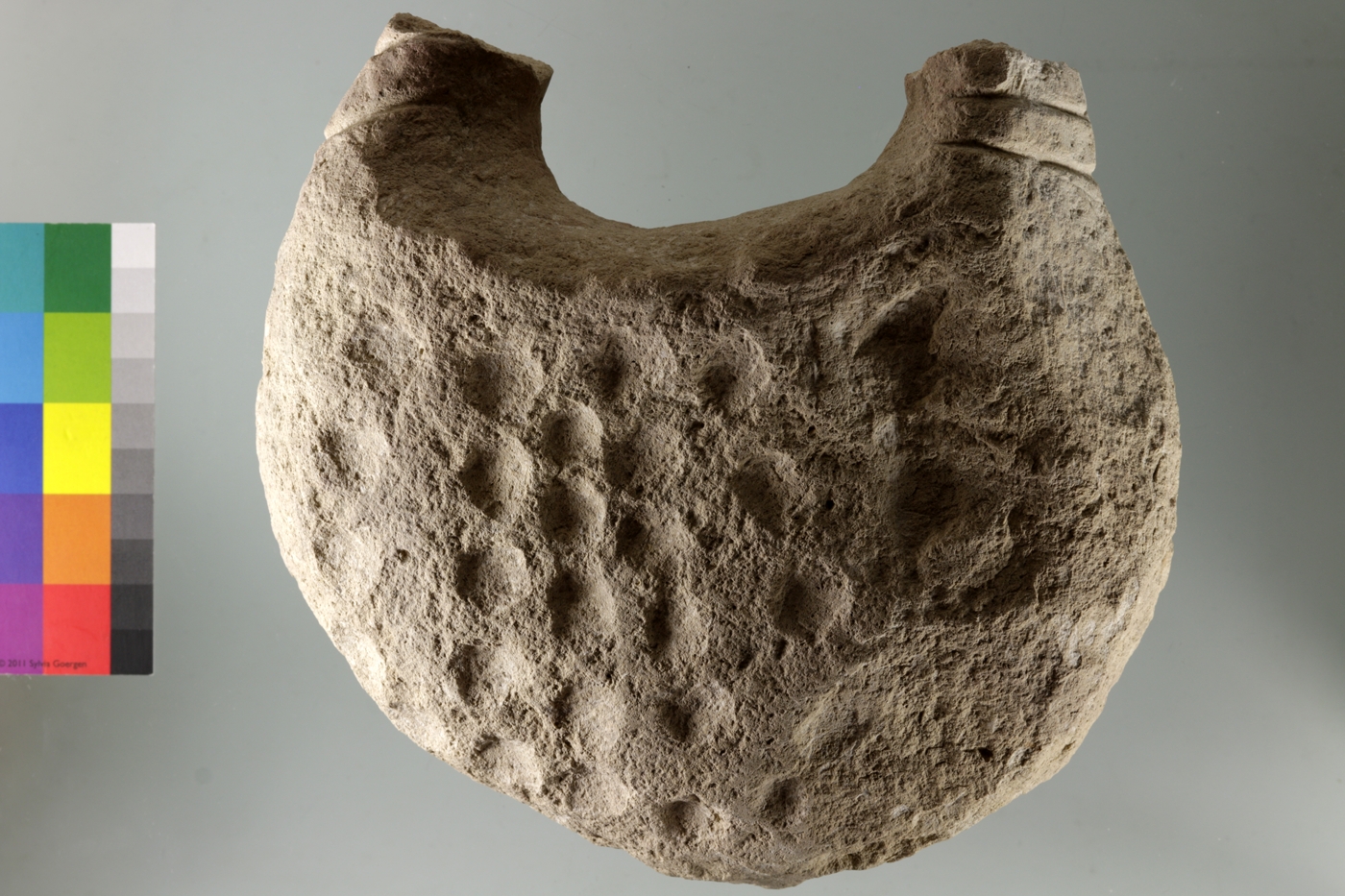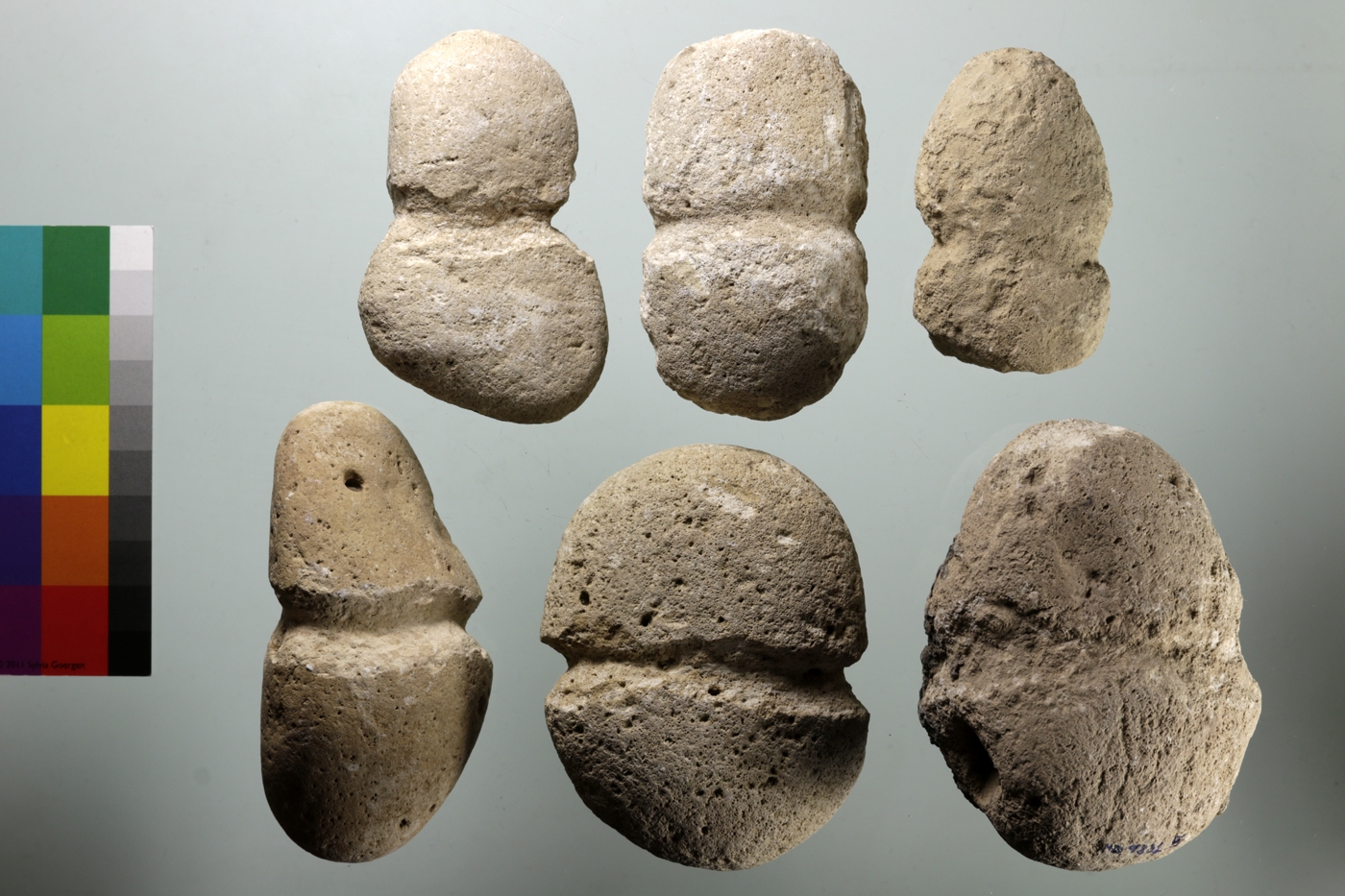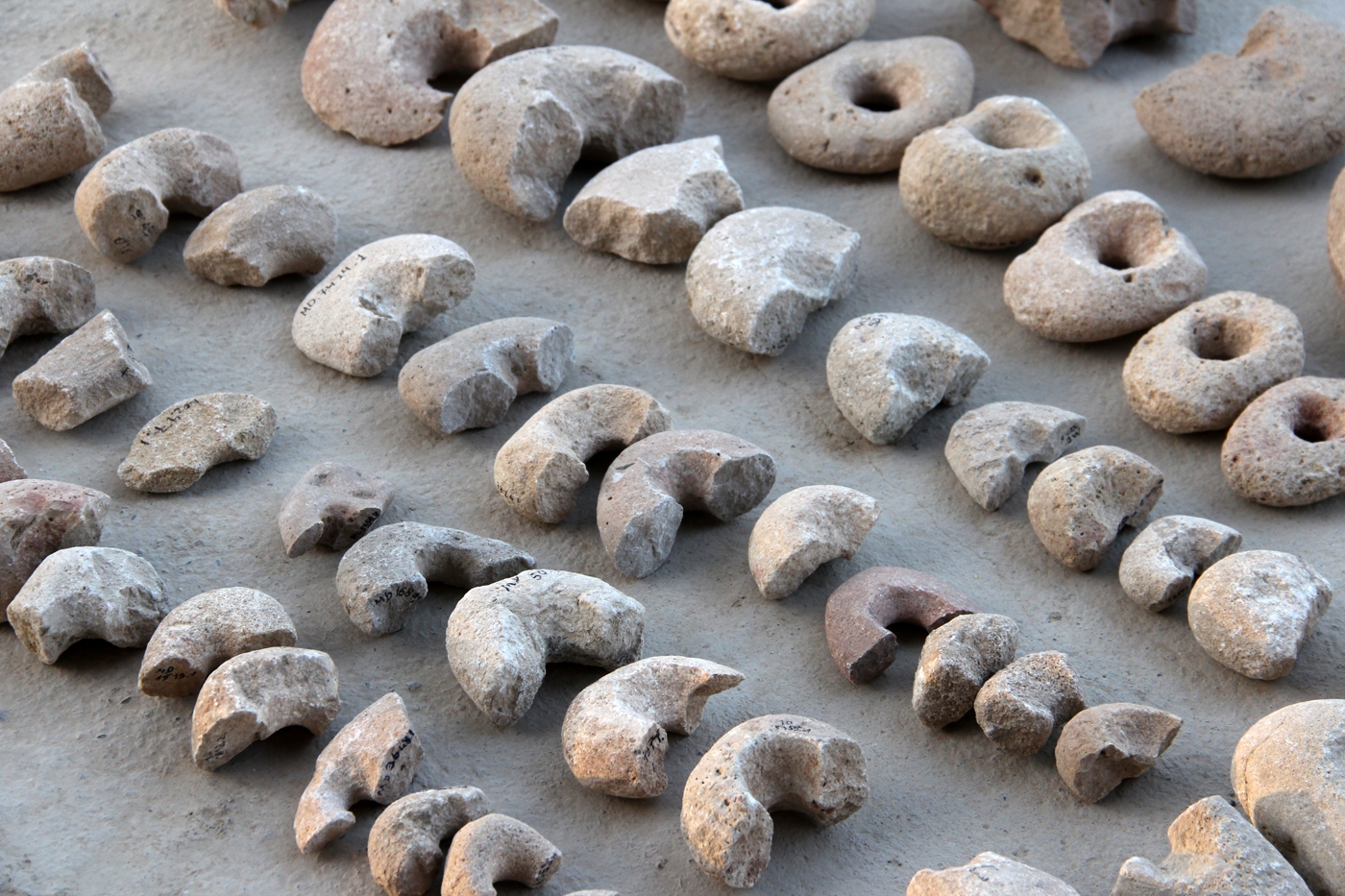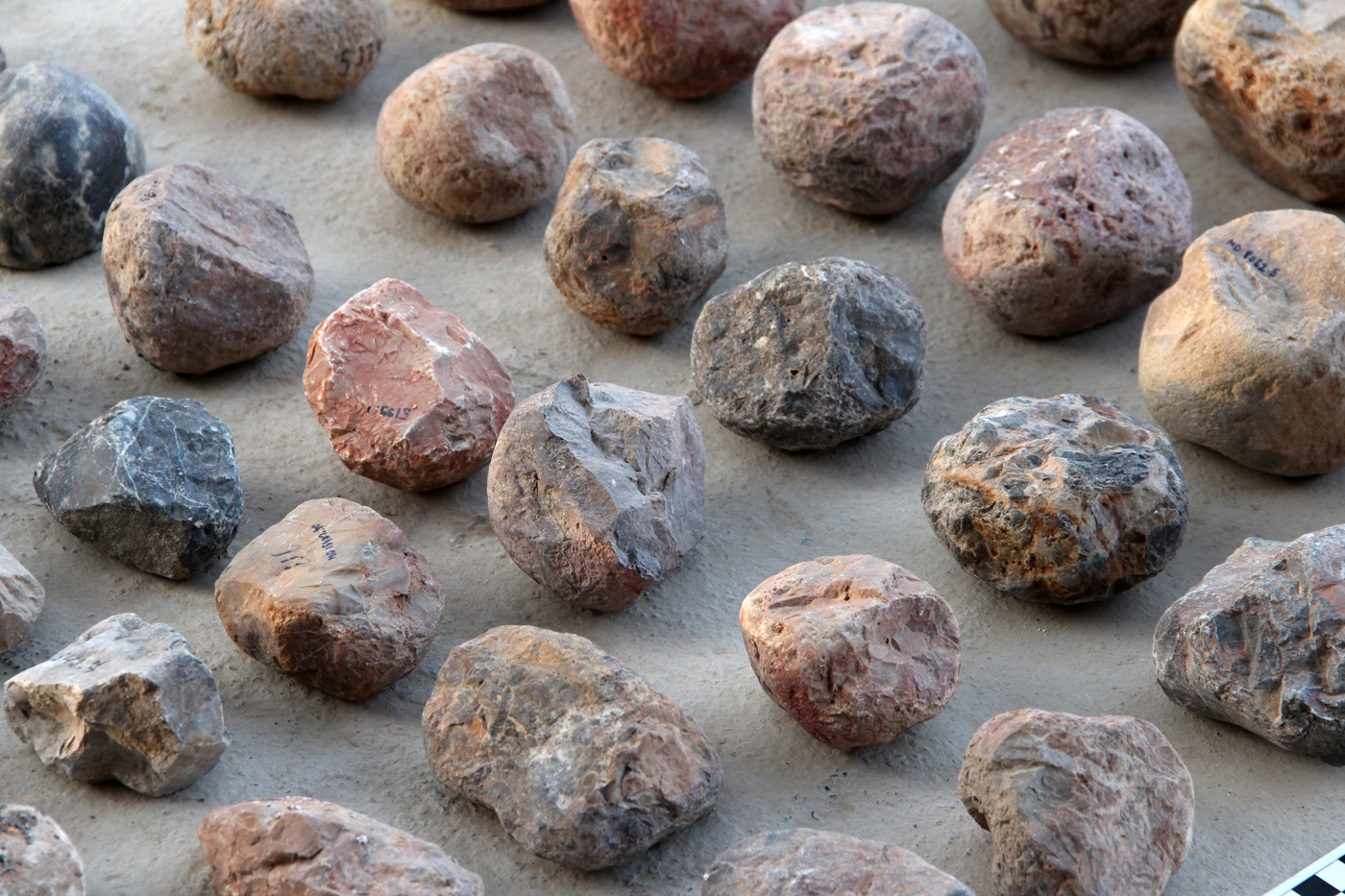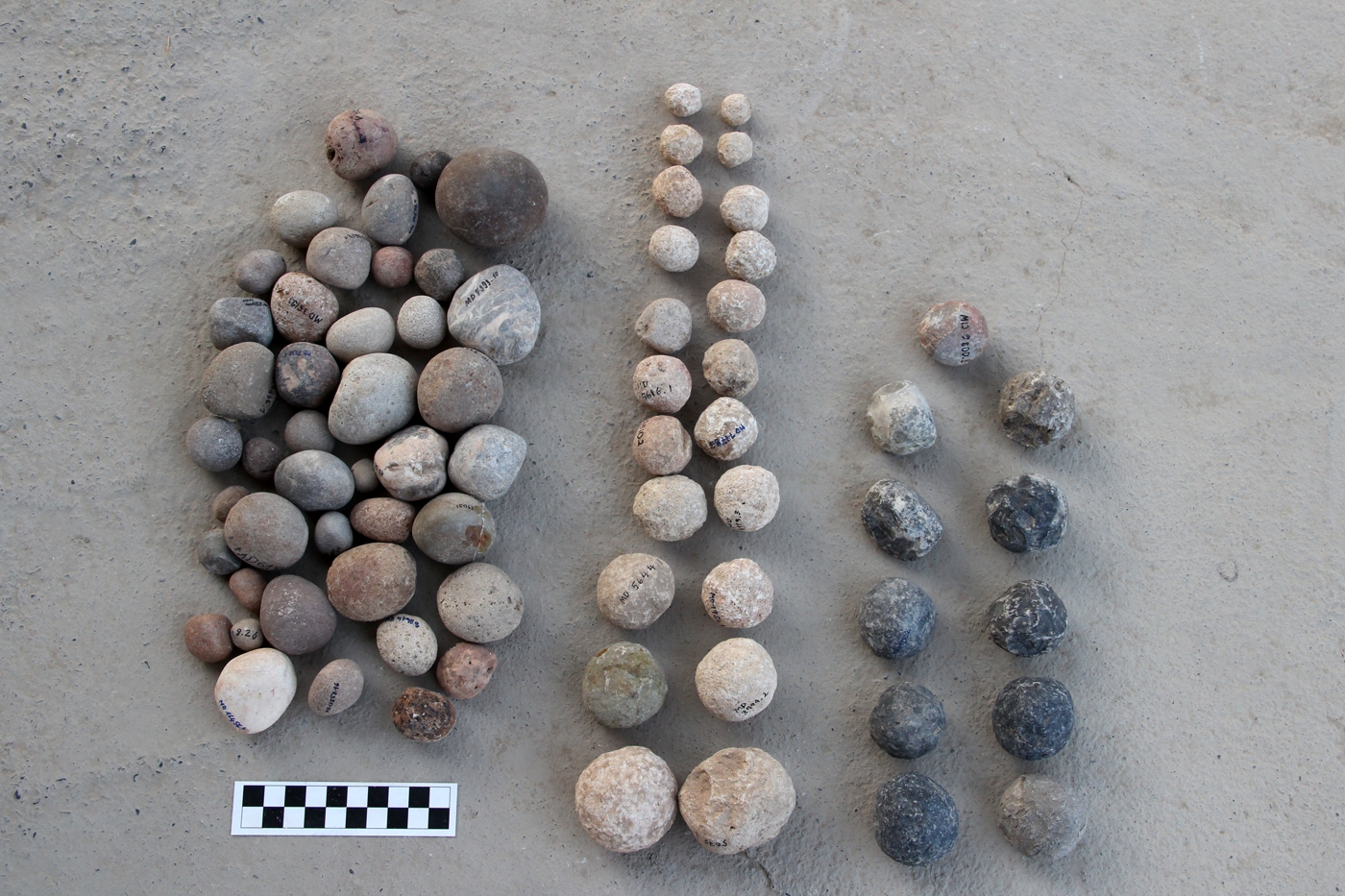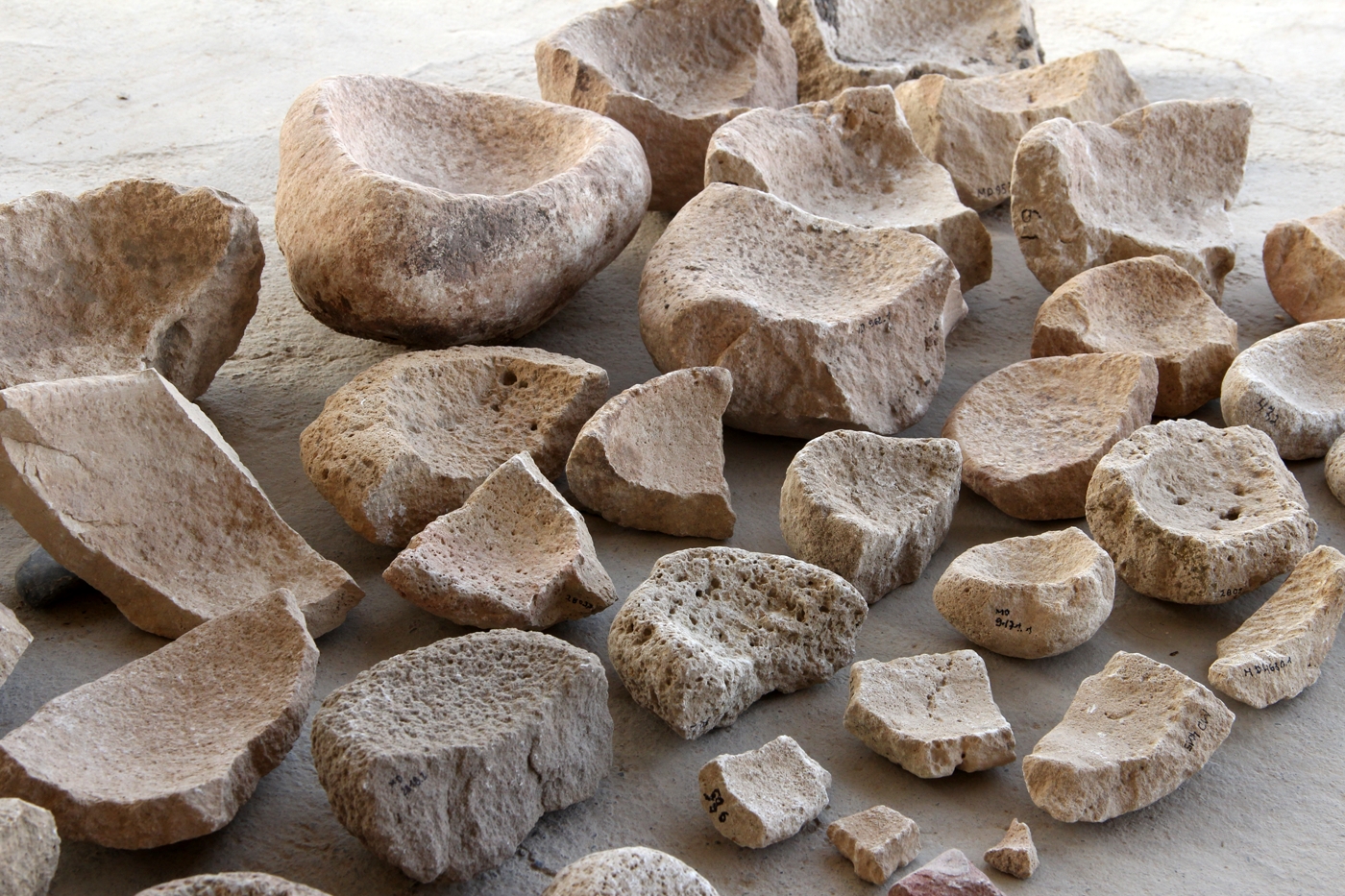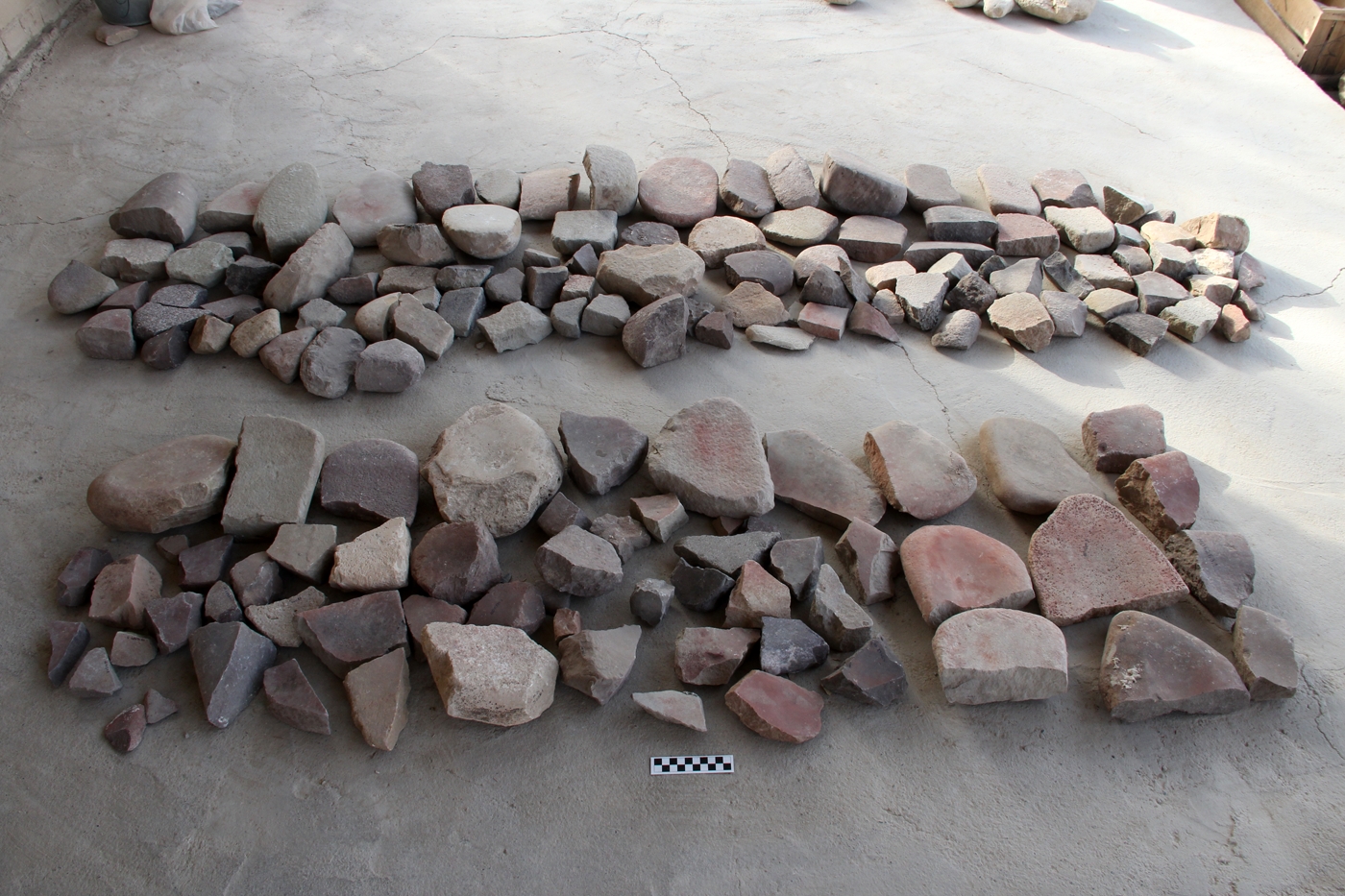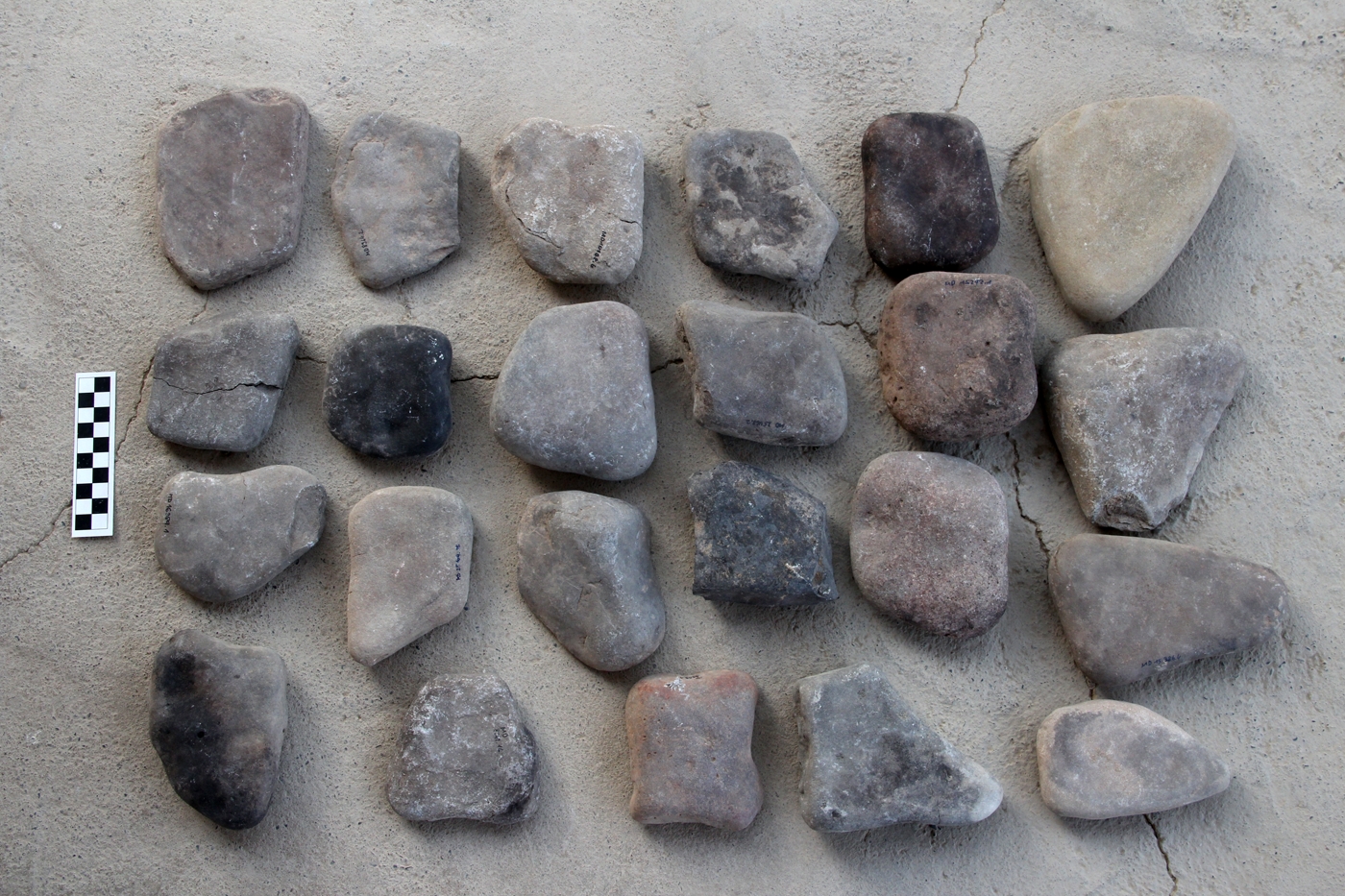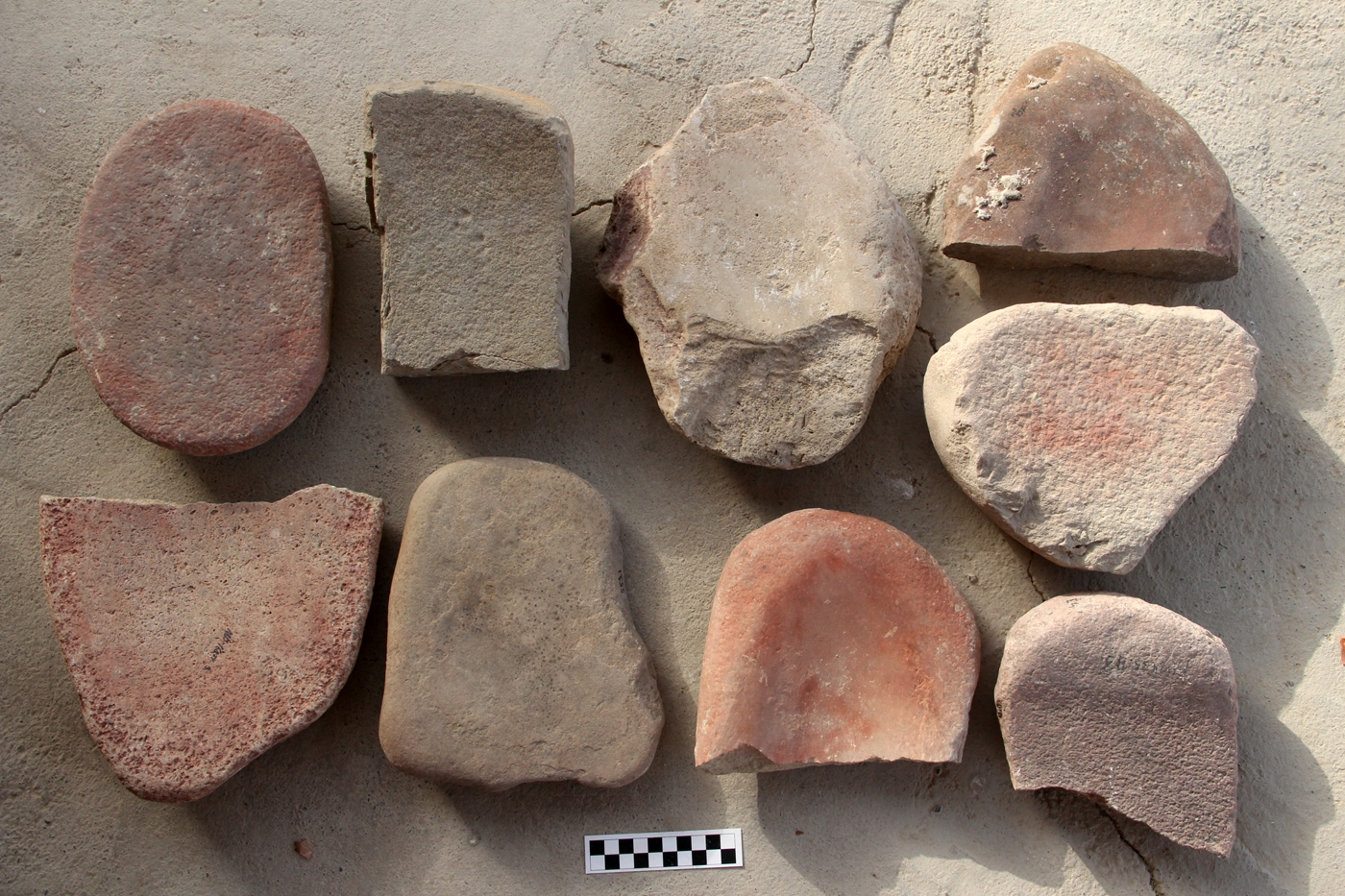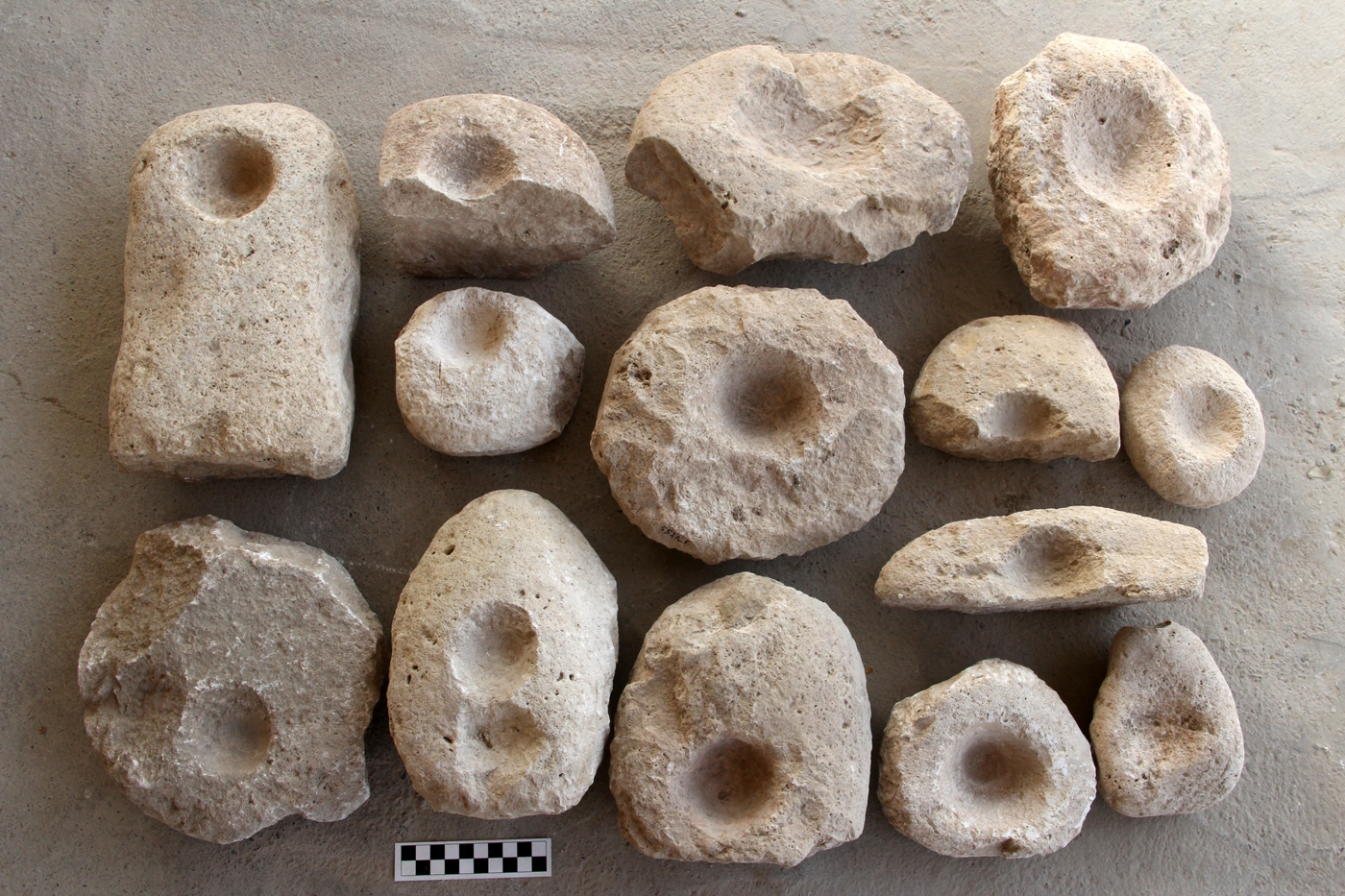Used stones
In the Monjukli Depe project, the term used stones refers to all those artifacts made of stone that are technologically not part of the chipped stone industry. Traditionally, these include objects such as grinding stones, mortars and pestles as well as chisels. However, these artifact groups do not encompass all of the large stone objects found at Monjukli Depe. Among the finds are a large number of unworked stones that show evidence of intensive contact with fire in the form of heat cracks, color changes, and traces of soot on their surfaces. These mostly fist-sized stones are referred to in the excavation documentation as burnt stones and were often found in dense scatters on house floors. One possible interpretation of them is that they were used in storing heat and thus as cooking or heating stones.
The used stone objects from Monjukli Depe were documented in terms of their size, weight, shape, type of stone, color, context in which they were found, as well as production and use traces. In this way, it is possible to examine the choice of materials, production and use, as well as reuse and disposal of stones, in order to obtain insights into the place of these easily obtainable objects in the life of people in Monjukli Depe.
In total, approximately 10,000 stones were documented that could be assigned to the category of used stone artifacts on the basis of use wear or production traces. Approximately 80% of them consist of the aforementioned burnt stones. The remaining ca. 2000 stones could be attributed to various use categories such as grinding, pounding, weighting, storing, as well as for building purposes.
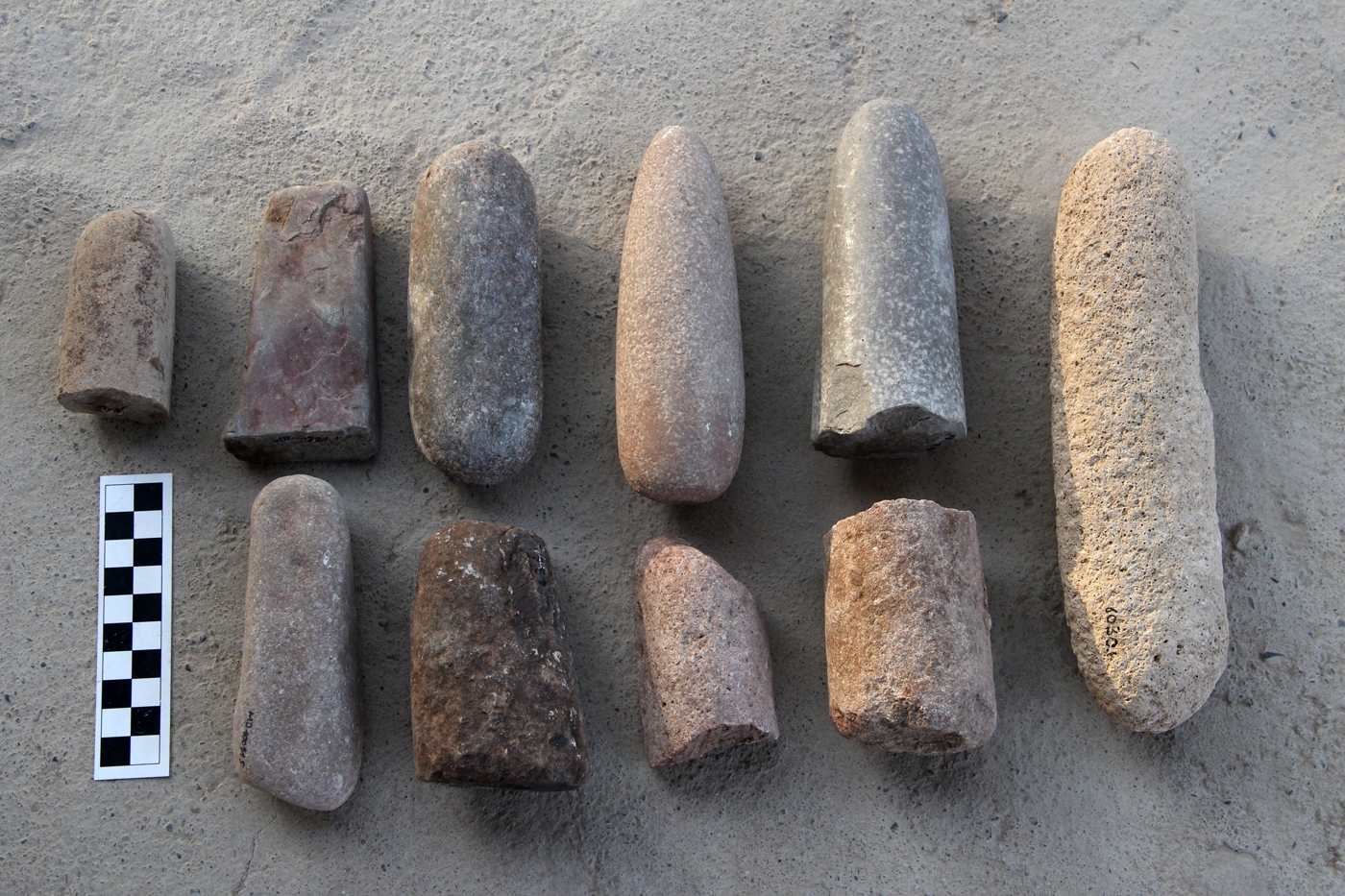 Stone mortars made of different raw materials. Some were worked substantially into shape, others were left more or less in their natural form.
Stone mortars made of different raw materials. Some were worked substantially into shape, others were left more or less in their natural form.
One of the most remarkable contexts recovered at Monjukli Depe is a pathway, partially paved with stones, that led towards the Eastern Midden. Dubbed by the excavation team "Berdiev Street," it ran from the northwestern portion of the village in a nearly straight line to the midden. Only the last portion of this path was paved with stones. It ended at a stone threshold, which was marked with a stone door frame and at least six door sockets. From this collection of objects, it was possible to reconstruct a gate.
Alongside their use in such monumental constructions, the used stone objects allow a look into the everyday activities of the inhabitants of Monjukli Depe. This includes the processing of grain, preparation of food, processing of pigments, and probably also leather and textile production. The spatial arrangement of the stones inside houses points to a relatively equal distribution of implements in different houses.
In the Neolithic the spectrum of used stone objects at Monjukli Depe already appears to have been relatively broad. Over time new forms and categories were added, resulting in an increase in the diversity of tools in the Aeneolithic.
For further reading, see Öğüt 2020; Öğüt in Pollock et al. 2018; Öğüt 2016; Rogasch and Teuwsen in Pollock et al. 2013.
